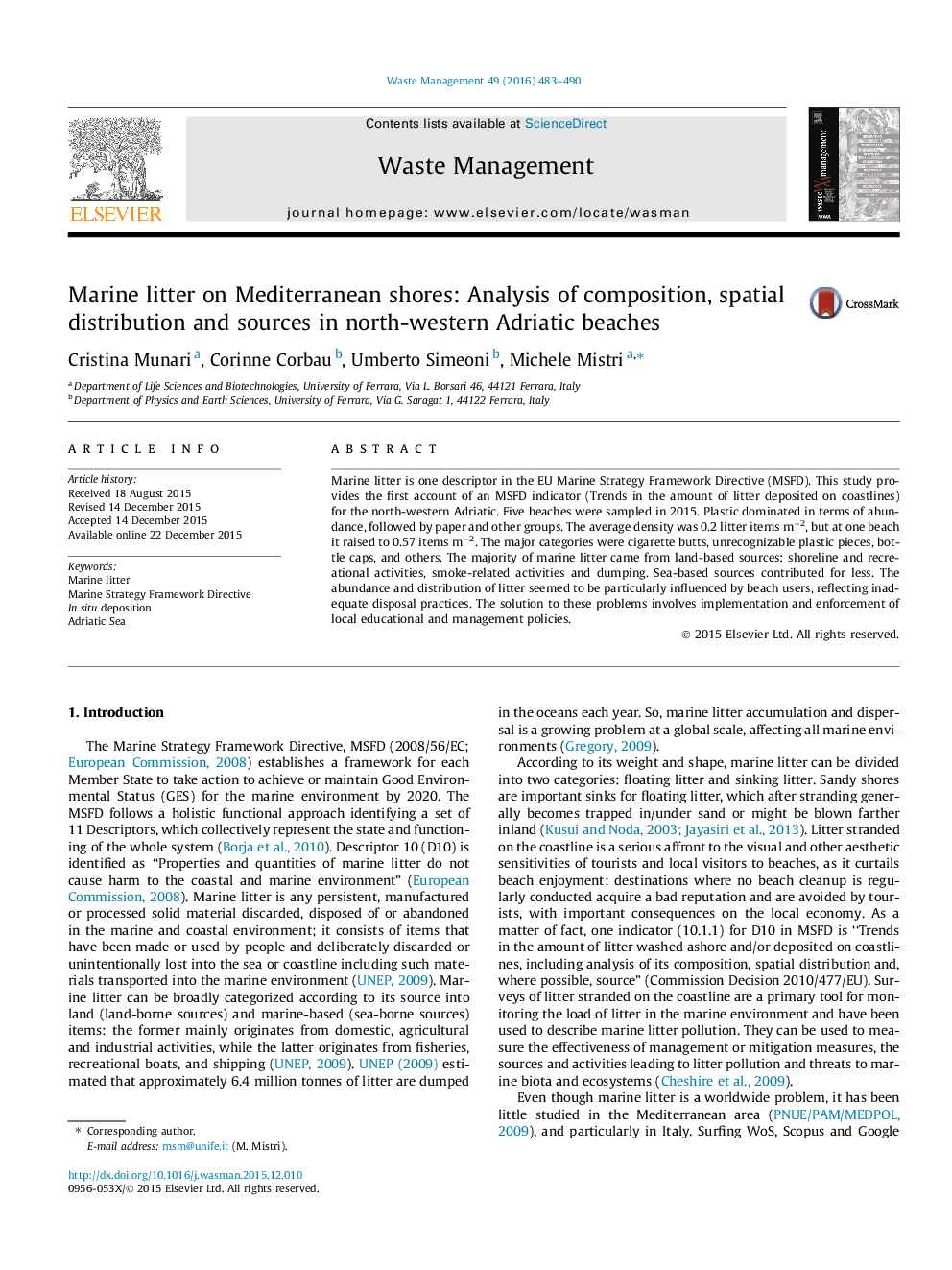| Article ID | Journal | Published Year | Pages | File Type |
|---|---|---|---|---|
| 6353853 | Waste Management | 2016 | 8 Pages |
â¢Five beaches were sampled in 2015 to assess marine litter quantity, type and source.â¢Plastic dominated in terms of abundance, followed by paper and other groups.â¢The majority of marine litter came from land-based sources.â¢The abundance of litter seemed to be particularly influenced by beach users.â¢Implementation/enforcement of local educational and management policies are needed.
Marine litter is one descriptor in the EU Marine Strategy Framework Directive (MSFD). This study provides the first account of an MSFD indicator (Trends in the amount of litter deposited on coastlines) for the north-western Adriatic. Five beaches were sampled in 2015. Plastic dominated in terms of abundance, followed by paper and other groups. The average density was 0.2 litter items mâ2, but at one beach it raised to 0.57 items mâ2. The major categories were cigarette butts, unrecognizable plastic pieces, bottle caps, and others. The majority of marine litter came from land-based sources: shoreline and recreational activities, smoke-related activities and dumping. Sea-based sources contributed for less. The abundance and distribution of litter seemed to be particularly influenced by beach users, reflecting inadequate disposal practices. The solution to these problems involves implementation and enforcement of local educational and management policies.
